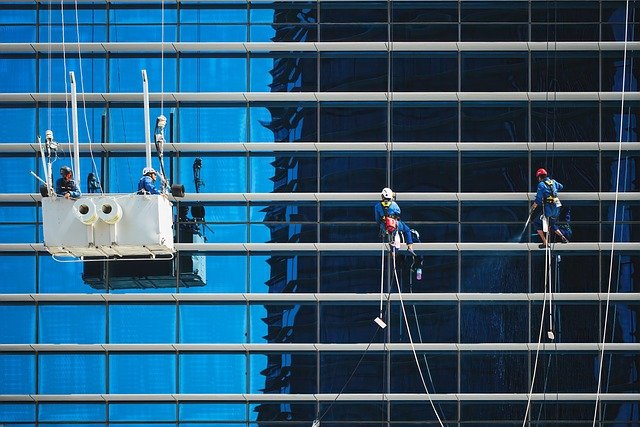Training Programs That Build Commercial Facade Service Competence
Effective training programs for commercial facade teams combine practical skill-building, safety practice, and operational knowledge. This article outlines the core components of programs that prepare workers for glasscare, highrise access methods, inspection routines, and business-related tasks such as scheduling and contracts.

Commercial facade service competence depends on structured training that blends technical skills with safety protocols and operational know-how. A well-designed program helps companies and workers understand glasscare best practices, the demands of highrise access, and the administrative tasks that support consistent service delivery. Training should be modular, measurable, and aligned with industry certification frameworks to ensure reliable outcomes and workforce mobility.
glasscare and facade basics
Understanding glasscare starts with material science and cleaning chemistry, combined with hands-on technique. Trainees learn how different glass types, frames, and sealants react to water, detergents, and mechanical action. Proper use of squeegees, scrubbers, and non-abrasive cleaners preserves glazing and reduces scratch or etching risk. Facade-focused modules introduce curtain wall systems, joint types, and how facade design influences access and cleaning frequency. Good glasscare training reduces damage claims and improves long-term facade condition.
highrise work and safety
Highrise operations require layered safety systems and situational awareness. Training covers fall protection, emergency planning, rescue procedures, and weather-related decision-making. Crew members practice personal protective equipment (PPE) selection and inspection, anchorage assessment, and load management. Simulated scenarios—such as medical emergencies or sudden wind increases—help develop calm response and clear communication. Safety culture is emphasized: regular drills, tool-box talks, and near-miss reporting build habits that reduce incidents on tall buildings.
certification and training pathways
Certification provides a recognized benchmark of competence and helps align training with regulatory or client expectations. Programs often map to nationally or internationally recognized standards for ropework, platforms, and work-at-height safety. Effective pathways combine classroom instruction, practical assessments, and supervised field time. Continuous professional development options—refresher courses, advanced ropeaccess techniques, and management training—support career progression while ensuring teams stay current with compliance and best practices.
ropeaccess, platforms, and equipment
Knowledge of ropeaccess systems, suspended platforms, and powered access equipment is core to facade competence. Trainees learn rigging principles, safe use of bosun’s chairs, cradle platforms, and mast-climbing units, plus maintenance checks for ropes, harnesses, slings, motors, and braking systems. Equipment selection training helps teams choose the right solution for facade geometry and contract requirements, balancing efficiency against safety and site constraints. Familiarity with inspection checklists for gear and platforms prevents in-service failures and increases client confidence.
scheduling, contracts, and pay considerations
Operational training should cover project scheduling, contract terms interpretation, and how pricing and pay structures influence scope and resource planning. Understanding client contracts helps teams identify deliverables such as frequency, surface treatments, access restrictions, and inspection requirements. Scheduling modules teach sequencing, crew allocation, and contingency planning for weather or access changes. Training can also include basic invoicing processes and how contractual clauses relate to safety and timesheets, without implying specific job availability or salary figures.
inspection, maintenance, and outsourcing
Inspection and maintenance practices keep facades performing and inform long-term planning. Trainees learn to conduct systematic inspections to spot seal failures, corrosion, glazing cracks, or anchor deterioration, and how to document findings for maintenance schedules. Programs often include criteria for when to repair in-house versus when to outsource specialized tasks such as structural glazing replacement or complex rigging work. Outsourcing modules help managers evaluate third-party providers, review service-level agreements, and integrate subcontractors into safety and quality systems.
Conclusion
A comprehensive training program for commercial facade services integrates glasscare technique, highrise safety, certified pathways, equipment proficiency, and operational skills like scheduling and contract awareness. Emphasizing practical assessment, regular refreshers, and clear documentation builds workforce competence and improves the reliability of facade maintenance programs while supporting safe, compliant operations.






